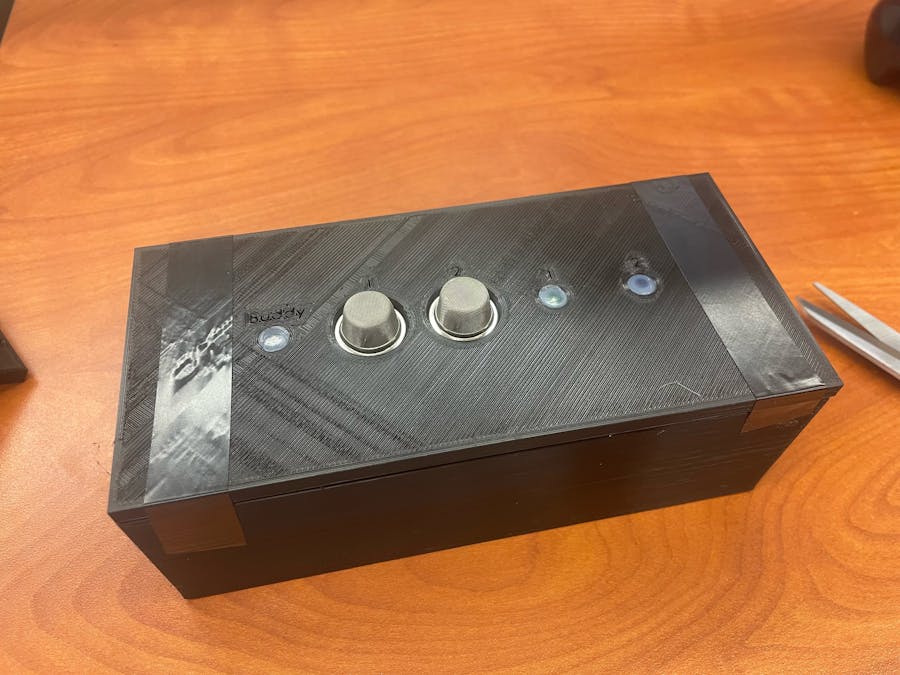The handheld hazardous gas detector is a lifesaving device for technicians and engineers who want to ensure their safety at work.
Things used in this project
Hardware components
Hand tools and fabrication machines
Hot glue gun (generic)
Tape, Electrical
3D Printer (generic)
Story
Alex Whitaker and Sam Weaver spent their past summer working at chemical plants with numerous hazards, including ethanol, nitric acid, nitrogen, hydrogen gas, ammonia, and other hazardous gasses. We both decided to develop a solution to help mitigate the risks engineers and technicians face as they accomplish their tasks. The hazardous gas detector can be worn around the belt and can hold up to 2 sensors. These can work very well if multiple technicians are together simultaneously. The problem we aim to solve is to allow technicians to know if they are in an area of immediate danger and if they are, they can take steps to vacate the premises. This technological solution has the potential to save lives, as there have been numerous cases of technician fatalities due to hazardous gasses, including the Valero refinery asphyxiation incident. The solution is ingenious because it can be easily worn on a belt rather than carrying it in a technician's hand. The newfound IOT skills can be used to test sensors, code the program needed to make the sensors output useful information, and could even save someone's life. Overall, the hazardous gas detector is quite useful for the safety of engineers and technicians, and everyone should consider using one, even in their own homes.
The team started by researching sensors to use for the particle argon. The team ultimately decided to use the MQ2, MQ5, MQ7, and MQ9 sensors. Each of these sensors would be connected to an LED and could communicate with the other person's particle via a "buddy" LED. Each of these sensors had a multitude of gasses it could detect, including:
MQ2 - LPG, Smoke, Alcohol, Propane, Hydrogen, Methane, and Carbon Monoxide
MQ5 - Hydrogen, LPG, CH4, Carbon Monoxide, and Alcohol
MQ7 - Carbon Monoxide
MQ9 - CH4, Propane, and Carbon Monoxide
These sensors would be tested through a car exhaust and isopropyl alcohol. MQ 2 and MQ 5 were used to test alcohol, while MQ 7 and MQ 9 were used to test the carbon monoxide output of a car. Check out our Youtube video for more information.
The live data from the sensors was graphed using Adafruit.
IOT Project Hazard Gas Detector - Sam Weaver and Alex Whitaker

Figure 1: Circuit Assembly with circuit exposed

Figure 2: Circuit exposed with Front Panel View of LED's and Sensors
Figure 3: Circuit case with Sensors and LED's exposed, hand used for reference of size
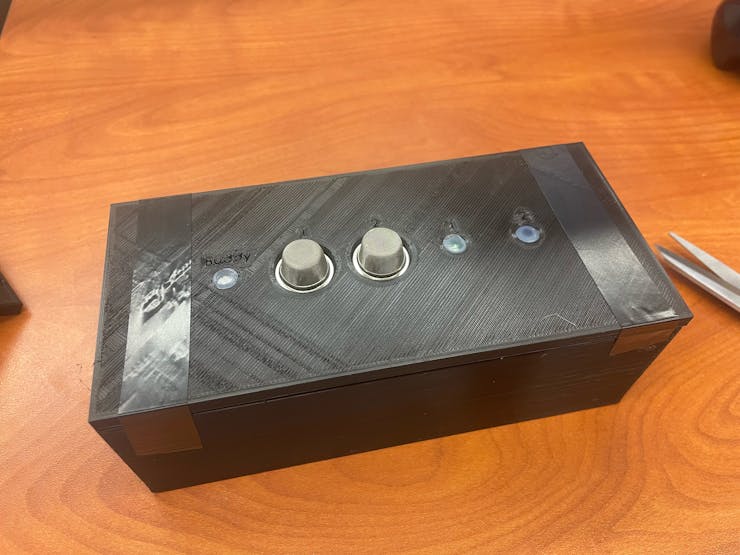
Figure 4: Final Assembly of Hazard Gas Detector
Figure 5: Communication Flow Chart
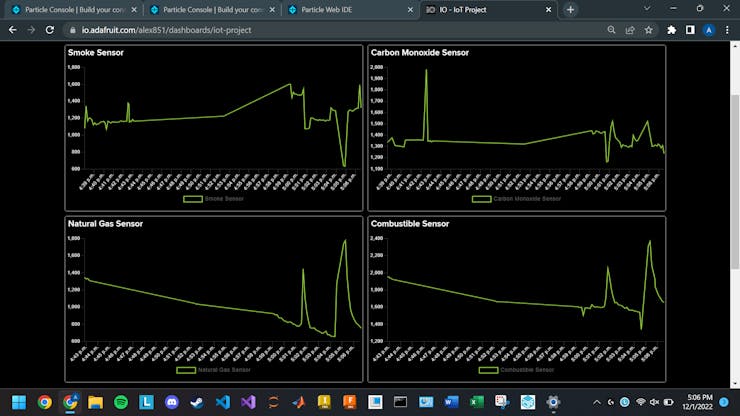
Custom parts and enclosures
Schematics
IOT Hazard Gas Detector IOT Circuit
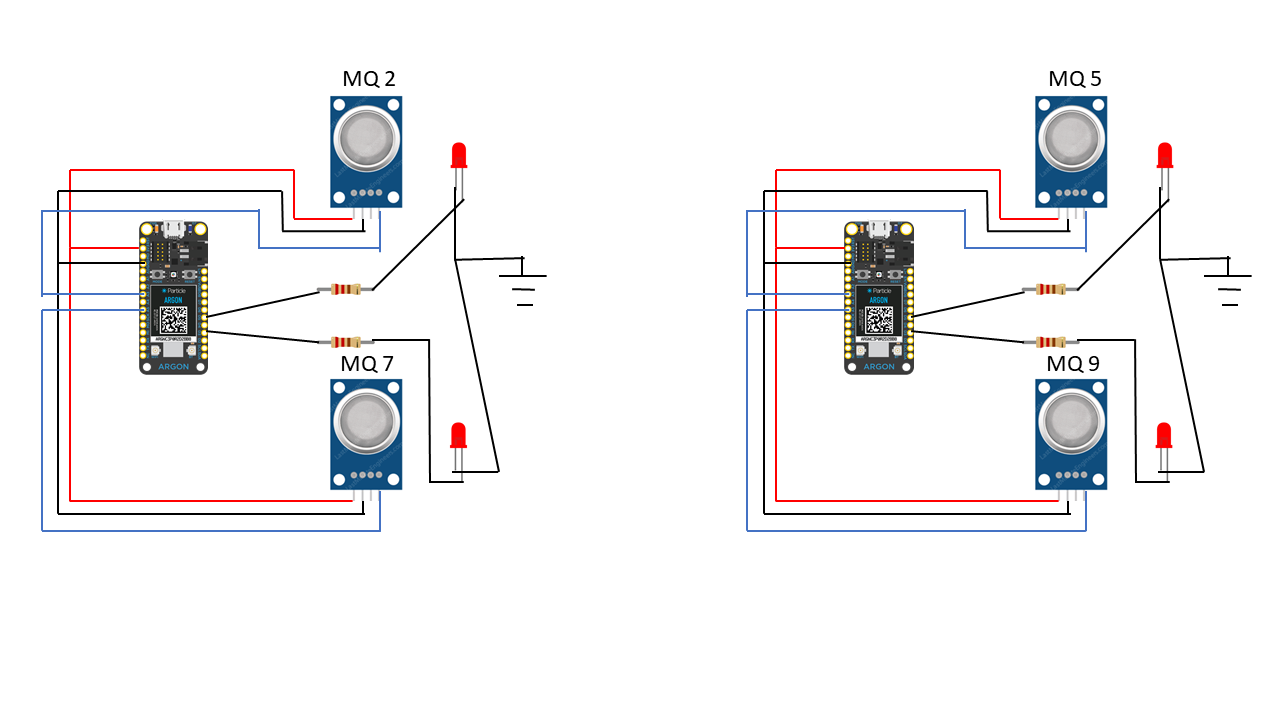
Code
Argon 1 Code
Arduino
// MQ-2 Smoke Sensor
int Led1 = D3;
int smokeSensor = A5;
int smokeThres = 1140;
// MQ-7 Carbon Monoxide Sensor
int Led2 = D5;
int coSensor = A3;
int coThres = 1060;
// led goes off when other Argon senses gas
int buddyLED = D1;
int natGasSensor = 0;
int combustibleSensor = 0;
void natGasHandler(const char *event, const char *data) {
natGasSensor = String(data).toInt();
}
void combustibleHandler(const char *event, const char *data) {
combustibleSensor = String(data).toInt();
}
void setup() {
pinMode(Led1, OUTPUT);
pinMode(smokeSensor, INPUT);
pinMode(Led2, OUTPUT);
pinMode(coSensor, INPUT);
pinMode(buddyLED, OUTPUT);
Particle.subscribe("Natural Gas Sensor", natGasHandler);
Particle.subscribe("Combustible Sensor", combustibleHandler);
}
void loop() {
// reads the smoke sensor data
int smokeSensorReading = analogRead(smokeSensor);
// lights up LED if sensor is higher than the sensor threshold
if (smokeSensorReading > smokeThres) {
digitalWrite(Led1, HIGH);
}
else {
digitalWrite(Led1, LOW);
}
// publishes data and waits until a set amount of time has passed to keep running
Particle.publish("Smoke Sensor", String(smokeSensorReading));
delay(4500);
// reads the data from the CO sensor
int coSensorReading = analogRead(coSensor);
// lights up another LED if sensor is higher than sensor threshold
if (coSensorReading > coThres) {
digitalWrite(Led2, HIGH);
}
else {
digitalWrite(Led2, LOW);
}
// publishes data and waits until a set amount of time has passed to keep running
Particle.publish("Carbon Monoxide Sensor", String(coSensorReading));
delay(4500);
// turns on LED if the other Argon detects hazardous gas
if (natGasSensor>880 || combustibleSensor>1400) {
digitalWrite(buddyLED, HIGH);
} else {
digitalWrite(buddyLED, LOW);
}
}Argon 2 Code
Arduino
// MQ-5 Natural Gas Sensor
int Led1 = D3;
int natGasSensor = A5;
int natGasThres = 880;
// MQ-9 Combustible Sensor
int Led2 = D5;
int combustibleSensor = A3;
int combustibleThres = 1400;
// led goes off when other Argon senses gas
int buddyLED = D1;
int smokeSensor = 0;
int coSensor = 0;
void smokeHandler(const char *event, const char *data) {
smokeSensor = String(data).toInt();
}
void coHandler(const char *event, const char *data) {
coSensor = String(data).toInt();
}
void setup() {
pinMode(Led1, OUTPUT);
pinMode(natGasSensor, INPUT);
pinMode(Led2, OUTPUT);
pinMode(combustibleSensor, INPUT);
pinMode(buddyLED, OUTPUT);
Particle.subscribe("Smoke Sensor", smokeHandler);
Particle.subscribe("Carbon Monoxide Sensor", coHandler);
}
void loop() {
// reads the natural gas sensor data
int natGasSensorReading = analogRead(natGasSensor);
// lights up another LED if sensor is higher than sensor threshold
if (natGasSensorReading > natGasThres) {
digitalWrite(Led1, HIGH);
}
else {
digitalWrite(Led1, LOW);
}
// publishes data to particle
Particle.publish("Natural Gas Sensor", String(natGasSensorReading));
delay(4500);
// reads the data from the combustibel sensor
int combustibleSensorReading = analogRead(combustibleSensor);
// lights up another LED if sensor is higher than sensor threshold
if (combustibleSensorReading > combustibleThres) {
digitalWrite(Led2, HIGH);
}
else {
digitalWrite(Led2, LOW);
}
// publishes the data to particle
Particle.publish("Combustible Sensor", String(combustibleSensorReading));
delay(4500);
// turns on LED if the other Argon detects hazardous gas
if (smokeSensor>1140 || coSensor>1060) {
digitalWrite(buddyLED, HIGH);
} else {
digitalWrite(buddyLED, LOW);
}
}The article was first published in hackster, November 17, 2022
cr: https://www.hackster.io/iot-project-team-44/hazardous-gas-detector-b6be30
author: IoT Project Team 44: Alex Whitaker, Sam Weaver



